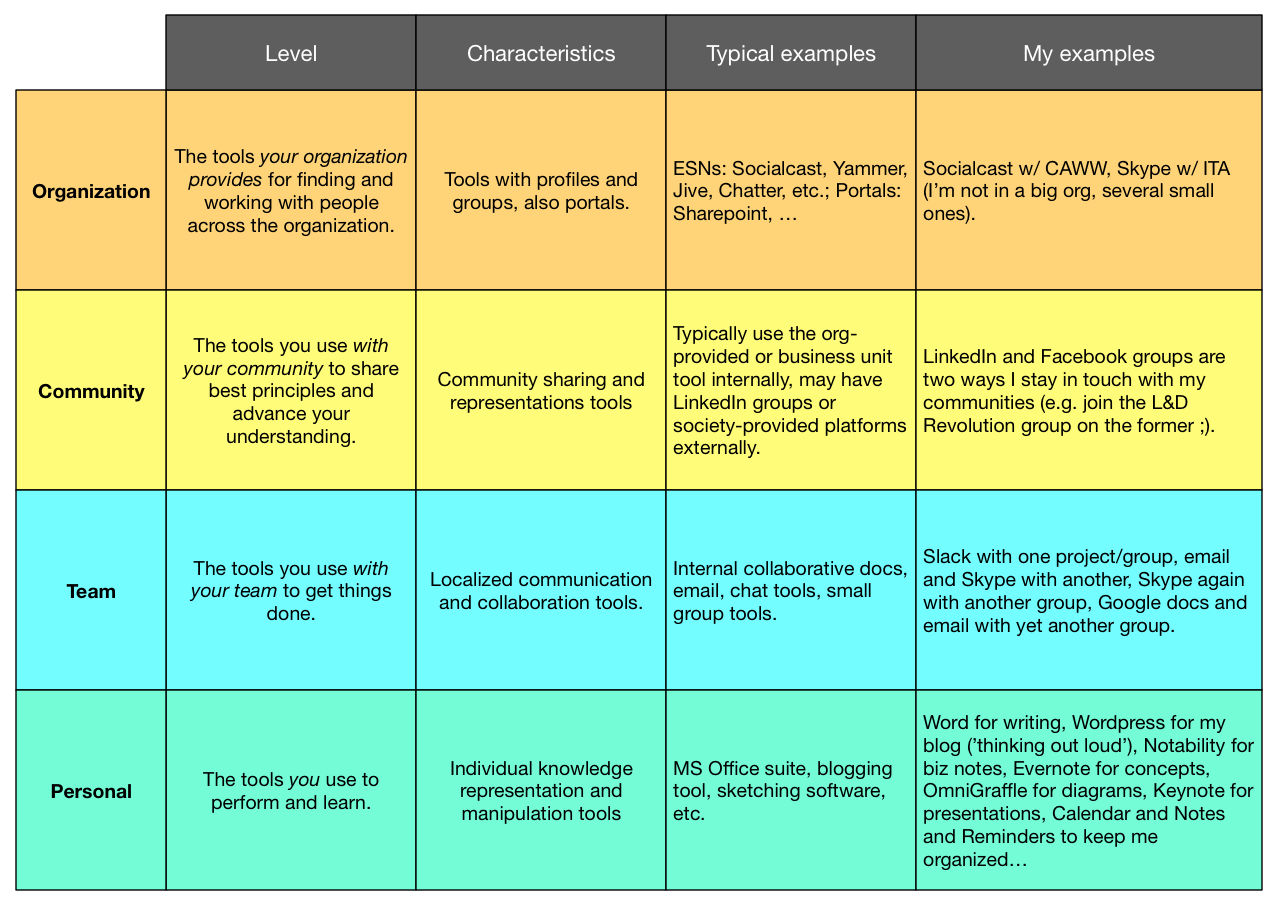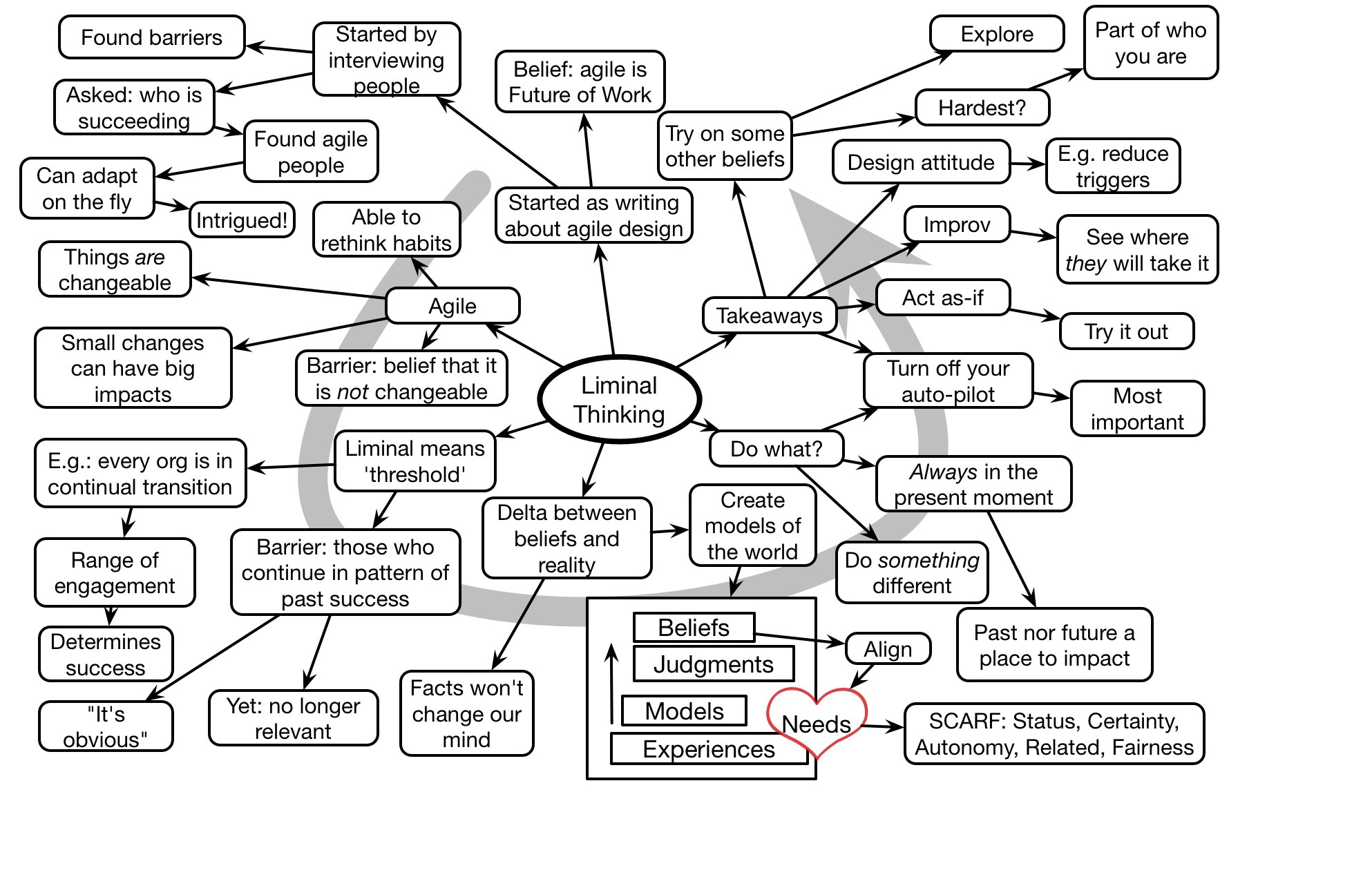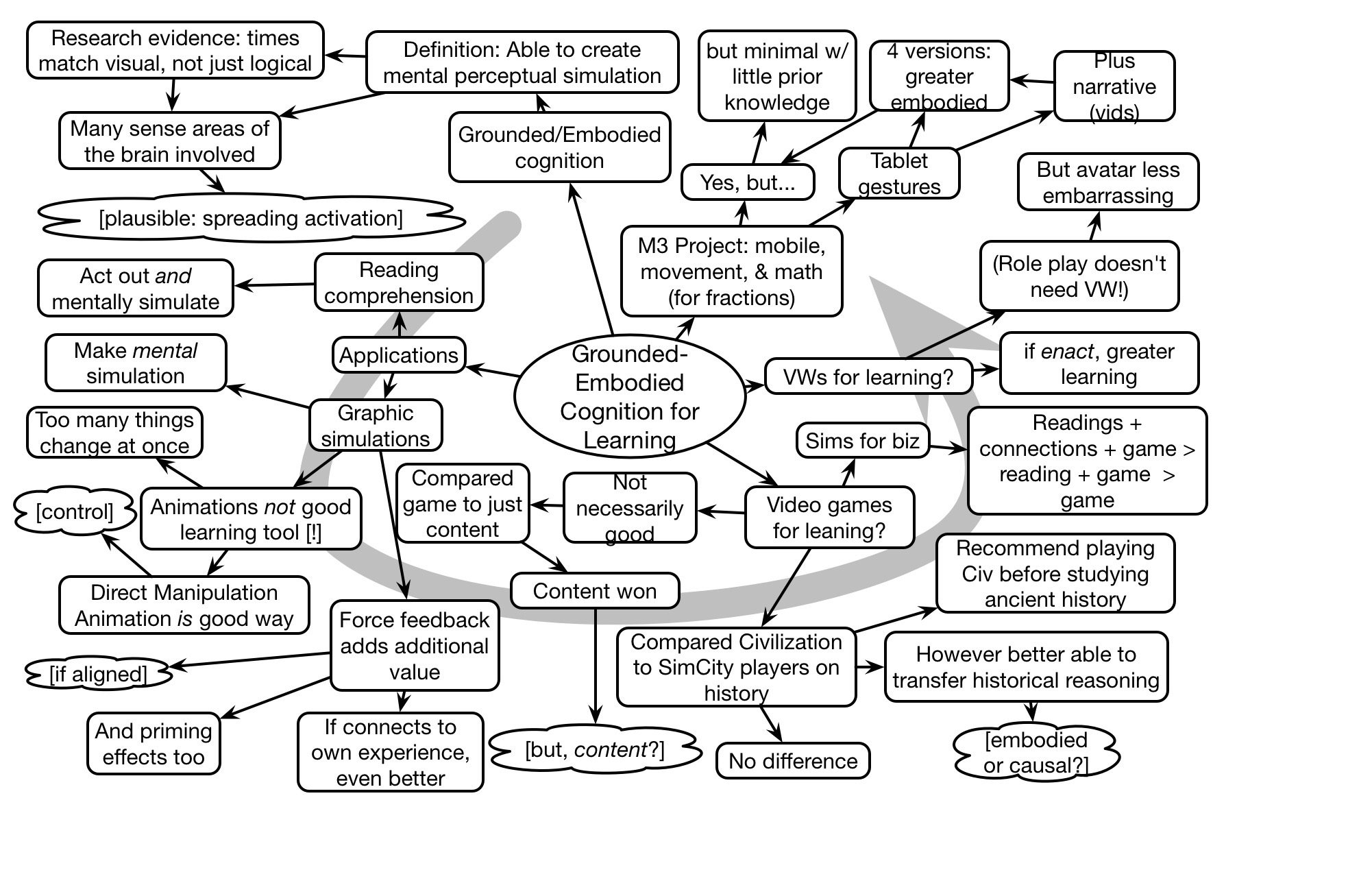I was fortunate to have a chance to hear Dave Gray (author of Connected Company) speak on his forthcoming book, Liminal Thinking. Interestingly inspired by his investigation of agile, it end up being about how to break through your barriers. He shared personal stories to make a compelling case that we can transcend our established approaches and make the changes we need.
Learning Through the Wild
So last week I was in the wilderness for some more time, this time with family. And there were several learnings as an outcome that are worth sharing.
 As context, Yosemite National Park is one of the world’s truly beautiful places, with the valley as an accessible way to see the glacier-carved rock. Beyond the valley, however, there is backcountry (mountains, rivers, lakes) that is only accessible by backpack, and I’ve done plenty of that. And then there’s one other option: the High Sierra Camps. There you can stay in tent cabins, eating prepared meals, but you can only get to them by horse or by hiking. (You can also get just meals, and carry in your tents and bags and all, which is what we did.) What this does is get you to a subset (a spectacular subset) of the high country, a chance to experience real wilderness without having to be able to carry a backpack.
As context, Yosemite National Park is one of the world’s truly beautiful places, with the valley as an accessible way to see the glacier-carved rock. Beyond the valley, however, there is backcountry (mountains, rivers, lakes) that is only accessible by backpack, and I’ve done plenty of that. And then there’s one other option: the High Sierra Camps. There you can stay in tent cabins, eating prepared meals, but you can only get to them by horse or by hiking. (You can also get just meals, and carry in your tents and bags and all, which is what we did.) What this does is get you to a subset (a spectacular subset) of the high country, a chance to experience real wilderness without having to be able to carry a backpack.
Also as context, I am a fervent believer in the value of wildness. As I expressed before, there’s the creativity aspect that comes from spending time in the wilderness. You can reflect on your regular world when you’re no longer tied to it. As you hike or ride along the trails, your mind can wander and process in the background. There are also mental health benefits to be found in escaping from the everyday clatter. (This is very necessary for me! :) And, importantly, the processes in nature provide a counter-balance to the artificial processes we put in place to breed plants and animals. The variation generated in the wild is a complement to our own approaches, just as computers are a complement to our brains. Consequently, I believe we need to preserve some of our natural spaces.
So, one of the learning outcomes is being able to experience the wilderness without having to be physically capable of carrying everything you need on your back. I reckon that if you can experience the wildness, you can appreciate it, and then can become a supporter. Thus, just the existence of these alternate paths (between cars and backpacking) means to me a higher likelihood of preserving the environment.
Similarly, there are rangers who visit these camps, and provide after-dinner campfire talks. They talk at dinner, talking about what they will be covering, but also advocating for the value of the programs and the wilderness. Similarly, the staff at the camps also do a good job of advocating for the wilderness (as they would), and there are guidebooks available for perusal to learn more, as well as information around the dining rooms (and great food!).
One of the larger learning lessons is that, once you’re in context, the interest is naturally sparked, and then you’re ripe for a message. Your curiosity gets stoked about why coyotes howl, once you hear them. Or you wonder about the geology, or the lifecycle of plants, or…you get the idea. Creating artificial contexts is one of the tricks of learning (please, don’t keep it abstract, it doesn’t work), but layering it on in context is increasingly doable and more valuable.
Meaningful engagement in context is a valuable prerequisite for learning. The reason we can go to conferences and get value (contrary to the old “you can’t learn from a lecture”) is because we’re engaged in activity and conferences serve as reflection opportunities. Sometimes you need to get away from the context to reflect, if the contextual pressures are too much, and sometimes the context naturally sparks reflection. Making time for reflection is a component of a learning organization, and getting support in context or having time away from context both are parts. So my recommendation is to support wilderness, and get out in it!
Quinnovation Fall 2016 Schedule
My fall schedule is coalescing, so I thought I’d provide pointers to when and where I’ll be for the rest of this year:
I’m doing two webinars for a government agency, one at the end of August, and one at the end of September.
I’ll be in Beijing running a mobile learning workshop on the 6th of September, and keynoting the CEFE conference on the 7th.
The week after I’ll be keynoting a private event in Connecticut.
And I’ll be delivering a virtual keynote for a different government agency in November.
I’ll be running an elearning strategy (read: Revolution) workshop at DevLearn in Las Vegas come mid-November, and presenting on elearning myths.
Then, on the very last day of November, I’ll be running an elearning design workshop at Online Educa in Berlin.
So, some availability in late September through October, or mid-December, if you’d like access to Quinnovation as well.
I hope that if you’re near Beijing, Las Vegas, or Berlin, you’ll be attending. If so, say hi!
‘Checking’ In
As a personal reflection, the value of checklists and forcing functions can definitely be understated. As I mentioned, last week I went into the woods for a few days. And while the trip didn’t live up to our plans, it was a great experience. However, there was a particular gap that points out our cognitive limitations.
So, I have a backpacking checklist. And I look at it from time to time. What I didn’t do this time was check it before the trip. And I found out once I got away from home was that I’d forgotten both my bandana and my towel! Both are useful, and while I was able to purchase a bandana ($15! but it is microfiber and large, so I’ll keep using it), I had to do without the towel (which the bandana was a poor but necessary substitute for).
We often swim or wade in the river (and did this trip too), and a towel’s handy to get dry before the breeze chills you or the horseflies descend. The bandana, well it served as a sun cover, mosquito deterrent, towel (see above), and glasses wipe. Amongst others.
Let me add that I almost left on today’s overnite biz trip without my sleep clothes! Fortunately, I had one of those middle-of-the-nite epiphanies, and remedied this morning.
And this just isn’t a consequence of advancing age (hey, I’m still [barely] < 60!). It’s a natural consequence of our cognitive architecture, and we have well-established processes/tools to support these gaps. These include checklists to help us remember things, and forcing functions whereby we place things in ways that it’s hard to forget things.
As a consequence, I’m going to do two things going forward. One is to make sure I do check my checklist. I’ll review it for comprehensiveness in the meantime, and have developed it in conjunction with another list from an experience colleague. I have another wilderness trip, and I’ll definitely check it beforehand. Second, I’ve now put the bandana and a towel in my backpack. So I’d actually have to take it out to forget it!
Here’s to knowing, and applying, tools to help us overcome our cognitive deficits. What are you doing to help not make mistakes? And what could you do similarly for your learning design processes?
Web trust
I get asked to view a lot of things. And sometimes, particularly when there’s a potential tangible relationship, I will actually go visit sites. (BTW, I tend to avoid what comes unsolicited, and instead trust to what comes through my social network.) And one of my strategies often fails, and that, to me, is a warning sign.
When I go to sites (not from familiar companies, but new ones), one of the places I’m very likely to visit is the ‘About Us’ page or equivalent. There’s a reason I do that: I want to know something about who is behind this, and why. They’re linked, but separable.
There’re a couple of reasons to be clear about who’s behind this. One is for authenticity: is there someone willing to put their name to what this is and what it’s about? And why them? What background do they have that makes them credible to be the ones behind this endeavor?
And the why is about what motivates them? Are they doing this because of a passion, or because they think it’s a good business opportunity? Either’s acceptable, but what you want is coherence between the people and what they’re doing. Ideally, it’s a good story that links them.
There are sites that are clearly out to make money, and some that are out to meet a real need. There are some that have been created by folks who have an idea but not necessarily a clue, and then there are those created by those who should be doing it. And when you get both together, need and clue, you have a site you are willing to investigate further.
It may seem overly harsh or naive, and I’m sure someone could spin a good story and fool me (and has ;), but I think this is a good heuristic, a good reality check, on any site that’s looking to interact with others. If my search fails to find the requisite information, my antennas start quivering, and my defenses go up. A personal opinion, of course. Do you agree? Do you have other checks that you like better? Eager to hear your thoughts.
Wild thinking
Our everyday lives are decreasingly connected to nature. We’re increasingly separated from the context we evolved in. Is that a good thing?
Now, our relationship with nature hasn’t always been one of benevolent protection, as Roderick Nash has let us know. We lived dangerous lives until we developed the means to defend ourselves, and then the wilderness became an opportunity to expand and profit. Now, however, with wilderness diminishing, and a growing awareness of the value of wildness for serendipitous diversity, we are beginning to view wilderness as a precious resource.
But are there reasons to consider wilderness benefits for our thinking and learning? The evidence appears to say yes. When we’re in wilderness with minimal risks, at least, the proximity to natural sounds and scenes seems to stimulate areas of the brain. It may take just a walk, or three days, but there are apparent benefits to heart and mind.
I’ve tried to get out in the wilderness at least once a year. I like to hike, and in particular to get backpacking, of late with trips to Yosemite National Park. A friend/colleague/mentor has regularly organized these trips, and several of us will hike off with our tents, stoves, sleeping bags, water filters, bear cans, and everything else for 3-7 days and get above timber line, sweaty, dirty, and happy. It was on just such a trip where ‘Quinnovation‘ emerged as a branding!
I’ve taken the family, too, to share my love of the outdoors. So, I’m off again, and we’ll see whether I come back charged with creativity (or just exhausted ;). Happy trails!
John Black #ICELW Keynote Mindmap
Professor John Black of Columbia Unveristy gave a fascinating talk about how games can leverage “embodied cognition” to achieve deeper learning. The notion is that by physical enaction, you get richer activation, and sponsor deeper learning. It obviously triggered lots of thoughts (mine are the ones in the bubbles :). Lots to ponder.
What’s Your Learning Tool Stack?
I woke up this morning thinking about the tools we use at various levels. Yeah, my life is exciting ;). Seriously, this is important, as the tools we use and provide through the organization impact the effectiveness with which people can work. And lately, I’ve been hearing the question about “what’s your <x> stack” [x|x=’design’, ‘development’, …]. What this represents is people talking about the tools they use to do their jobs, and I reckon it’s important for us to talk about tools for learning. You can see the results of Jane Hart’s annual survey, but I’m carving it up into a finer granularity, because I think it changes depending on the ‘level’ at which you’re working, ala the Coherent Organization. So, of course, I created a diagram.
 What we’re talking about here, starting at the bottom, are the tools you personally use for learning. Or, of course, the ones others use in your org. So this is how you represent your own understandings, and manipulate information, for your own purposes. For many people in organizations, this is likely to include the MS Office Suite, e.g. Word, PowerPoint, and Excel. Maybe OneNote? For me, it’s Word for writing, OmniGraffle for diagramming (as this one was created in), WordPress for this blog (my thinking out loud; it is for me, at least in the first instance), and a suite of note taking software (depending on type of notes) and personal productivity.
What we’re talking about here, starting at the bottom, are the tools you personally use for learning. Or, of course, the ones others use in your org. So this is how you represent your own understandings, and manipulate information, for your own purposes. For many people in organizations, this is likely to include the MS Office Suite, e.g. Word, PowerPoint, and Excel. Maybe OneNote? For me, it’s Word for writing, OmniGraffle for diagramming (as this one was created in), WordPress for this blog (my thinking out loud; it is for me, at least in the first instance), and a suite of note taking software (depending on type of notes) and personal productivity.
From there, we talk about team tools. These are to manage communication and information sharing between teams. This can be email, but increasingly we’re seeing dedicated shared tools being supported, like Slack, that support creating groups, and archive discussions and files. Collaborative documents are a really valuable tool here so you’re not sending around email (though I’m doing that with one team right now, but it’s only back forth, not coordinating between multiple people, at least on my end!). Instead, I coordinate with one group with Slack, a couple others with Skype and email, and am using Google Docs and email with another.
From there we move up to the community level. Here the need is to develop, refine, and share best principles. So the need is for tools that support shared representations. Communities are large, so we need to start having subgroups, and profiles become important. The organization’s ESN may support this, though (and probably unfortunately) many business units have their own tools. And we should be connecting with colleagues in other organizations, so we might be using society-provided platforms or leverage LinkedIn groups. There’s also probably a need to save community-specific resources like documents and job aids, so there may be a portal function as well. Certainly ongoing discussions are supported. Personally, without my own org, I tap into external communities using tools like LinkedIn groups (there’s one for the L&D Revolution, BTW!), and Facebook (mostly friends, but some from our own field).
Finally, we get to the org level. Here we (should) see organization wide Enterprise Social Networks like Jive and Yammer, etc. Also enterprise wide portal tools like Sharepoint. Personally, I work with colleagues using Socialcast in one instance, and Skype with another (tho’ Skype really isn’t a full solution).
So, this is a preliminary cut to show my thinking at inception. What have I forgotten? What’s your learning stack?
Heading in the right direction
Most of our educational approaches – K12, Higher Ed, and organizational – are fundamentally wrong. What I see in schools, classrooms, and corporations are information presentation and knowledge testing. Which isn’t bad in and of itself, except that it won’t lead to new abilities to do! And this bothers me.
As a consequence, I took a stand trying to create a curricula that wasn’t about content, but instead about action. I elaborated it in some subsequent posts, trying to make clear that the activities could be connected and social, so that you could be developing something over time, and also that the output of the activity produced products – both the work and thoughts on the work – that serve as a portfolio.
I just was reading and saw some lovely synergistic thoughts that inspire me that there’s hope. For one, Paul Tough apparently wrote a book on the non-cognitive aspects of successful learners, How Children Succeed, and then followed it up with Helping Children Succeed, which digs into the ignored ‘how’. His point is that elements like ‘grit’ that have been (rightly) touted aren’t developed in the same way cognitive skills are, and yet they can be developed. I haven’t read his book (yet), but in exploring an interview with him, I found out about Expeditionary Learning.
And what Expeditionary Learning has, I’m happy to discover, is an approach based upon deeply immersive projects that integrate curricula and require the learning traits recognized as important. Tough’s point is that the environment matters, and here are schools that are restructured to be learning environments with learning cultures. They’re social, facilitated, with meaningful goals, and real challenges. This is about learning, not testing. “A teacher’s primary task is to help students overcome their fears and discover they can do more than they think they can.”
And I similarly came across an article by Benjamin Riley, who’s been pilloried as the poster-child against personalization. And he embraces that from a particular stance, that learning should be personalized by teachers, not technology. He goes further, talking about having teachers understand learning science, becoming learning engineers. He also emphasizes social aspects.
Both of these approaches indicate a shift from content regurgitation to meaningful social action, in ways that reflect what’s known about how we think, work, and learn. It’s way past time, but it doesn’t mean we shouldn’t keep striving to do better. I’ll argue that in higher ed and in organizations, we should also become more aware of learning science, and on meaningful activity. I encourage you to read the short interview and article, and think about where you see leverage to improve learning. I’m happy to help!
Learning in Context
In a recent guest post, I wrote about the importance of context in learning. And for a featured session at the upcoming FocusOn Learning event, I’ll be talking about performance support in context. But there was a recent question about how you’d do it in a particular environment, and that got me thinking about the the necessary requirements.
As context (ahem), there are already context-sensitive systems. I helped lead the design of one where a complex device was instrumented and consequently there were many indicators about the current status of the device. This trend is increasing. And there are tools to build context-sensitive helps systems around enterprise software, whether purchased or home-grown. And there are also context-sensitive systems that track your location on mobile and allow you to use that to trigger a variety of actions.
Now, to be clear, these are already in use for performance support, but how do we take advantage of them for learning. Moreover, can we go beyond ‘location’ specific learning? I think we can, if we rethink.
So first, we obviously can use those same systems to deliver specific learning. We can have a rich model of learning around a system, so a detailed competency map, and then with a rich profile of the learner we can know what they know and don’t, and then when they’re at a point where there’s a gap between their knowledge and the desired, we can trigger some additional information. It’s in context, at a ‘teachable moment’, so it doesn’t necessarily have to be assessed.
This would be on top of performance support, typically, as they’re still learning so we don’t want to risk a mistake. Or we could have a little chance to try it out and get it wrong that doesn’t actually get executed, and then give them feedback and the right answer to perform. We’d have to be clear, however, about why learning is needed in addition to the right answer: is this something that really needs to be learned?
I want to go a wee bit further, though; can we build it around what the learner is doing? How could we know? Besides increasingly complex sensor logic, we can use when they are. What’s on their calendar? If it’s tagged appropriately, we can know at least what they’re supposed to be doing. And we can develop not only specific system skills, but more general business skills: negotiation, running meetings, problem-solving/trouble-shooting, design, and more.
The point is that our learners are in contexts all the time. Rather than take them away to learn, can we develop learning that wraps around what they’re doing? Increasingly we can, and in richer and richer ways. We can tap into the situational motivation to accomplish the task in the moment, and the existing parameters, to make ordinary tasks into learning opportunities. And that more ubiquitous, continuous development is more naturally matched to how we learn.


